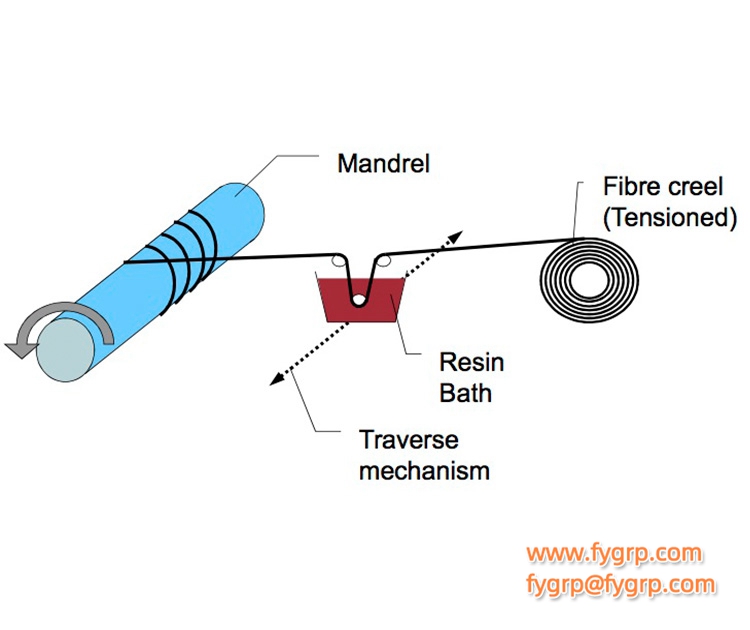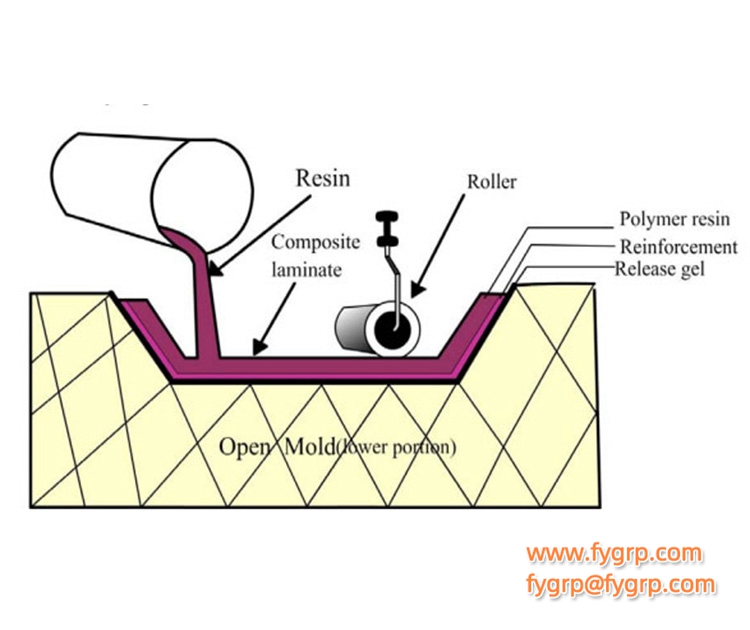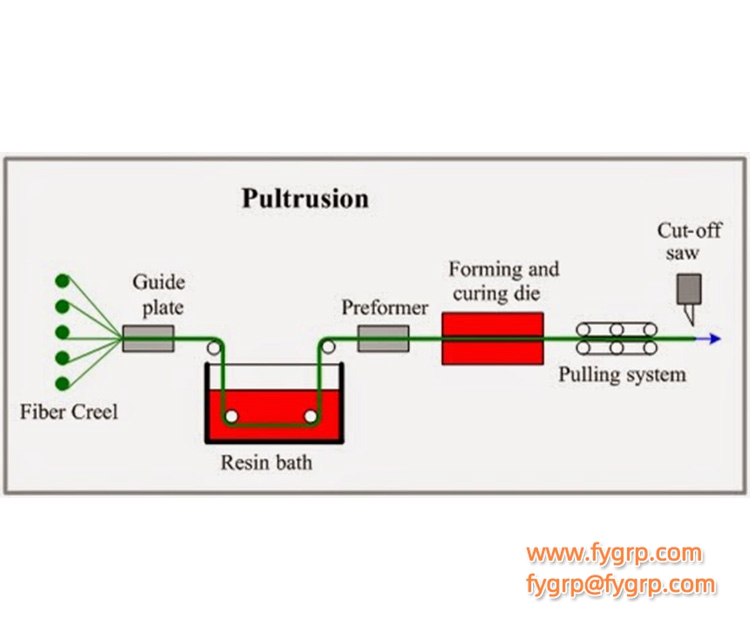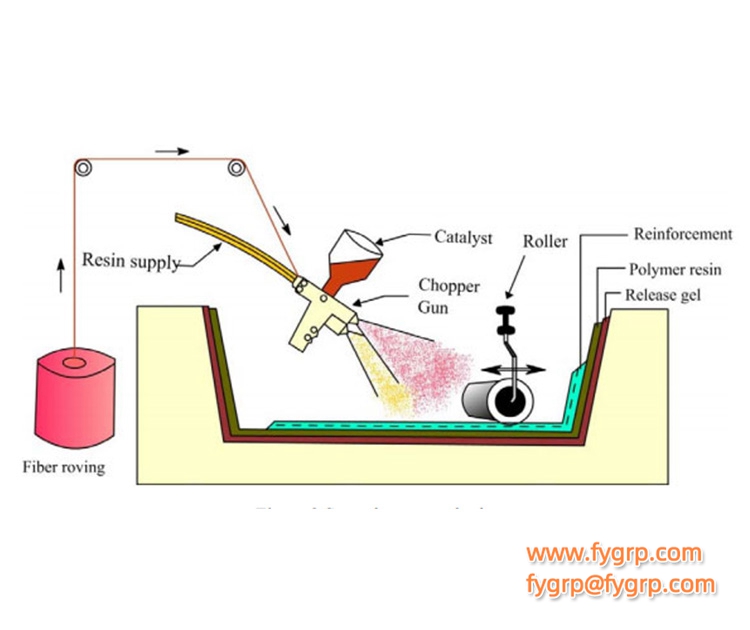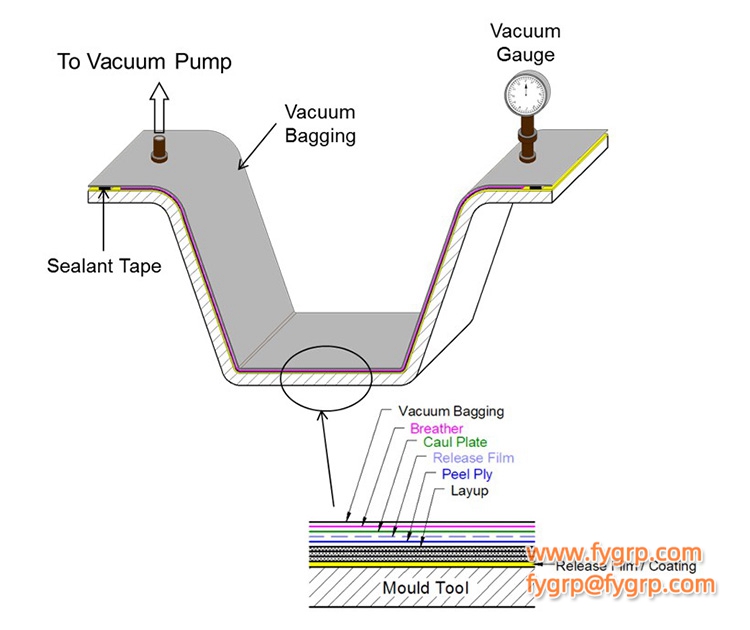The description of FRP equipment manufacturing process in chlor-alkali industry
The chlor-alkali industry is a highly corrosive industry, and the materials used to manufacture its equipment must be resistant to corrosive media such as caustic soda, ammonia, hydrochloric acid, backwash brine, and sodium hypochlorite. The correct selection of corrosion-resistant materials is a prerequisite for controlling corrosion and prolonging service life. It is also an arduous task. Our company has analyzed and summarized the equipment previously made for the chlor-alkali industry, and understood the requirements of the production process and media on the equipment. Through the selection of resin types and grades, plus appropriate molding processes, in line with the principles of advanced, applicable and economical, we can produce corrosion-resistant FRP products for customers.
(1)、Application of FRP in production equipment of chlor-alkali industry
1、Brine refining section
The crude brine after the dissolution of the original salt contains impurities such as Ca2+, Mg2+, SO42-, Fe3+ and can not be directly used in the electrolytic cell, and the precipitation of Ca2+, Mg2+, Fe3+ ions in the refined FRP equipment is controlled.
According to the control requirements of FRP equipment, in the manufacturing process, the lining anticorrosion layer is usually double-layer lining, and the reinforcing material is made of polyester fiber, and low Ca2+, Mg2+ resin is used as the body material to increase the strength of FRP products. Generally, the resin type is Vinyl ester.
2、Electrolysis section
Due to the presence of sodium chloride solution, wet chlorine, ammonia, dilute brine, hypochlorous acid and other corrosive media in brine electrolysis, higher requirements are placed on the selection of materials for equipment and piping in production facilities.
The glass fiber reinforced plastic equipment used in this section includes: chlorine water seal tank, trap, chlorine water storage tank, chlorine scrubber, water mist separator, high-purity hydrochloric acid storage tank, hydrochloric acid storage tank, etc. The separator adopts PVC/ FRP structure, others can adopt FRP structure.
3、Chlorine treatment section
The process of chlorine treatment roughly includes chlorine cooling, drying and dehydration, purification and compression and transportation. The main corrosive media are wet chlorine, ammonia and dilute sulfuric acid. In this section, the glass fiber reinforced plastic equipment includes: dechlorination tower, packing drying The tower, chlorine absorption tower (also called bubble cap drying tower), etc., generally adopt PVC/FRP structure.
4、Chlorine and wastewater treatment section
The low-purity chlorine produced when the electrolysis project is started and stopped, the accidental chlorine gas and the waste chlorine and hydrochloric acid gas produced by each process are all treated in this section. The low-concentration alkali is used for absorption to generate sodium hypochlorite solution. This solution is extremely corrosive when it is unstable. Strong. Originally, PVC is generally used as the lining layer and FRP as the reinforcement layer. However, our company uses the latest imported vinyl ester resin as the full FRP structure.
5、In the above sections, the pipes that are matched with the equipment and meet the technological process can adopt PVC/FRP structure products.
In view of the application of the above glass fiber reinforced plastic products in the chlor-alkali industry, our company strictly follows the control standards of the national ISO9001 international quality system for the selection, design, manufacturing, and inspection of each equipment, from raw material inspection, product design, and manufacturing. Finished product inspection, after-sales service and other procedures are strictly required to produce high-quality products that meet user requirements and quality requirements.。
(2)、About the choice of raw materials
With the rapid development of the chemical industry today, many vinyl resins with good performance have emerged, and they can replace many PVC as lining equipment.
The scientific name of FRP is glass fiber reinforced plastic, which is composed of matrix material-resin and reinforced material-fiber.
Matrix material—resin are mostly synthetic resins. Vinyl ester is the most widely used in the chlor-alkali industry. Derakane-470 resin is a corrosion-resistant resin with excellent comprehensive performance, and is resistant to some solvents and oxidizing media. Its heat-resistant deformation temperature reaches 120°C. In addition, PalatalA410-901 has a wide range of applications, with high mechanical strength, heat degradation and chemical resistance. It is mainly used as an adhesive between polyvinyl chloride (PVC) and glass fiber reinforced plastic (FRP). It has passed FYGRP Shear strength test, the test result reached 75Kg/cm.
(3)、Manufacturing process and control points
The product structure of FRP equipment is roughly divided into three layers: Lining layer, structural layer (reinforcement layer) and anti-aging layer.
1、The anti-corrosion layer of the lining layer mainly plays a role of anti-corrosion. It is a resin-rich layer with a resin content of more than 92%. The choice of matrix material should be based on the working conditions of the equipment and pipelines. The reinforcing material should be made of polyester surface felt for equipment and pipelines requiring low Ca2-, Mg2-, etc. And it is made into a double lining layer, which plays a double insurance role, which can effectively prevent the precipitation of Ca2+ and Mg2+ ions in the reinforcing material and the matrix material.
2、The impermeable layer (secondary inner layer) of the inner lining layer is the same as the base material, and the reinforcement material is selected from Zhejiang Jushi Group's non-alkali non-twisted jet yarn. The resin content of this layer is 75-80%.
3、Structural layer: This layer is the main bearing layer to ensure that the product has sufficient strength, rigidity and stability. It adopts one-high-three-many (high-strength, multi-point, multi-angle, multi-level) cross-winding automatic forming method, and is produced in strict accordance with the design documents. Control the winding angle. Different winding angles are used for vertical vessels and horizontal vessels. To ensure that the strength of the equipment in the circumferential and axial directions is reasonably distributed.
The base material used is generally vinyl resin, such as 411# resin, and the reinforcement material is selected from Zhejiang Jushi Group's alkali-free twist-free winding yarn.
4、Anti-aging layer: This layer is a protective layer to prevent the equipment from aging, which can extend the service life of the equipment.
The process: adding paraffin styrene solution and ultraviolet absorber to the gel coat resin. After the outer protective resin is cured, the paraffin is precipitated, which can effectively isolate the oxidation reaction of oxygen and the matrix material. The ultraviolet absorber can convert ultraviolet light into heat or Secondary radiation, which plays a protective role and prolongs the service life of the equipment. In addition, flame retardant can be added, or flame retardant resin can be used, and its oxygen index can reach 36 or more, which can fully meet the fire protection requirements of users.
Nozzle assembly: Before the container is assembled, the reference point is selected to open the hole. For vertical vessels and towers, the bottom plane is the reference point, so that the user will not easily cause misalignment when fitting the process pipe.
For equipment with PVC/FRP structure, the structure is PVC lining, transition layer (adhesive layer), reinforcement layer, and outer protective layer. The reinforced layer and outer protective layer are similar to the full FRP structure. For the PVC lining layer and transition layer, the manufacturing process is as follows:
The PVC part adopts standard-compliant hard PVC sheets and pipes for chemical use. The welding adopts hot-air welding. The weld structure should be uniform and dense without scorching. The manufacturing and acceptance of the PVC shall be carried out according to the "Technical Conditions for Polyvinyl Chloride Plastic Equipment" CD130A18-85 .
The inner and outer surfaces of the cylinder body and the head are smoothed, and the two ends of the tower section flanges of the tower section are welded to the tower body for secondary processing for the tightness. After the equipment is welded, the welds are checked with 100% electric spark , Make the adhesive layer after qualified, first remove the oil on the surface of the PVC equipment, then polish the surface with a grinder, evenly coat the surface treatment agent and adhesive (using A410-901 resin), and lay the chopped strand mat completely soaked , According to the equipment specifications and models, 1-2 layers can be laid. The bonding of this layer is the key to control.
Regarding the flatness of the internal parts involved in the tower, such as the grid, the flatness tolerance after installation should be +2mm, the flatness tolerance of the sprinkler pipe should be +3mm when installing, and other accessories should meet the requirements of the drawings.
For tower equipment with skirts, after the tower body is manufactured (that is, the winding reinforcement layer is manufactured), measure the outer diameter of the bonding position of the lower part and the skirt, and then weld the skirt, the skirt and the bottom pad. Pay attention The pipes and flanges on the equipment that interfere with the skirt are welded and strengthened after the equipment and the skirt are installed.
Process improvement combined with the characteristics of the chlor-alkali industry:
1、Storage tanks. Electrolyzers and pure hydrochloric acid tanks in the chlor-alkali industry used bisphenol A type 3301 resin for the anti-corrosion layer resin in the chlor-alkali industry. After a period of use, other manufacturers found that the color of the hydrochloric acid they contained turned yellow. Our company discussed with the resin supplier and found that the resin itself does not have quality problems, and that the manufacturing meets the requirements. It may be a material selection problem. For this reason, the lining protective resin is changed to vinyl resin because of its good corrosion resistance and chemical resistance. Stability. After several years of use, it has been proved that the equipment made of vinyl resin has not changed the containing medium, and the equipment that requires low Ca2-, Mg2+ plasma must undergo post-processing after the equipment is manufactured. The treatment methods are: First wash with detergent, then wash with water. Rinse twice with hot water at 80°C. After drying, the test should reach the required COD value.
The vertical storage tank controls the winding angle of 60 when making the strengthening layer, so that the strengthened hoop strength is greater than the axial strength, and the wall thickness of the cylinder increases with the pressure (mainly hydrostatic pressure). , Showing a stepped distribution. When assembling the nozzle, 4 ribs shall be added if the nominal diameter is less than DN50, and the discharge port adopts a reducing flange form. In this way, the bonding strength with the tank body and its own strength are higher.
2、To wind large storage tanks on site, our company has improved on-site winding equipment and technology, and designed and manufactured on-site manufacturing equipment with hoop and cross winding procedures. According to the working conditions of the on-site storage tank, product design and process design are carried out. During the on-site construction process, the automatic winding forming method of alternating loop and cross is adopted. Provides the hoop strength and axial strength for the product, and the on-site storage tank has high mechanical strength and stability.
3、Tower type:
The traditional design of the tower type is generally PVC/FRP composite structure, because PVC is resistant to corrosion by media such as acid and chlorine, especially drying towers and bubble towers. With the rapid development of the modern chemical industry, the PVC lining of some towers can be replaced by vinyl ester resin. For the chlorine scrubber and chlorine accident treatment tower currently produced, the lining anticorrosion layer can be W2-1 of Shanghai University of Science and Technology, or D411, D470 of Ashland DOW Company, so that the inner lining layer and the structural layer to the outer protective layer are similar. Material, to avoid the phenomenon of interface peeling due to different thermal expansion coefficients of different types of materials.
The flange connection of the tower used to not process the flange surface, but rely on thickened gaskets to seal, but after a period of use, due to thick gaskets, the gas erosion rate is faster, resulting in soft gaskets , It is easy to leak in the place where the gap of the joint surface is large. For this reason, our company conducts mechanical processing on the joint surface of all tower cylinder flanges to ensure that the gap between the two flanges is minimized and the gasket is tightly bonded.
For drying towers with a PVC/FRP composite structure, 100% of the welding seams are inspected except for the use of electric sparks after welding, and the airtight negative pressure test is required after the overall assembly is completed.
All towers and pressure vessels are made of reinforcement layer. After finishing the inner lining, spraying and hoop winding process are carried out, and then the cross winding layer is made, so as to avoid the uneven outer surface of the inner lining, the deviation of the rotating ring, and the winding tension The uneven interlayer stress caused by the cross-winding directly caused by unevenness.
4、Pipeline
The lining anti-corrosion layer and the flange connection surface must be made into a double-layer structure, and the material selection is consistent with the connection device. The outside of the pipe body protection layer must be polished with a polyester film, which will cause more corrosion to the surface of the pipe body with chlorine in the chlor-alkali industry. A layer of protection.
After our company's continuous improvement of the process, continuous improvement to make the manufactured equipment more perfect, some process technology has been praised by Italy, our technical level has reached international standards.
At the inspection stage after the equipment is manufactured, the quality inspection of equipment and pipelines shall be carried out according to the "Technical Conditions of Polyvinyl Chloride Plastic Products Equipment" CD130A18-85 and "Fiber Reinforced Plastic Storage Tanks" JC/T587-1995. Pack and ship after passing the inspection. The tower should be fixed with a saddle support before loading, so as to prevent the tower from being damaged by bumps during transportation, resulting in quality problems.
Location:Home>Technology










